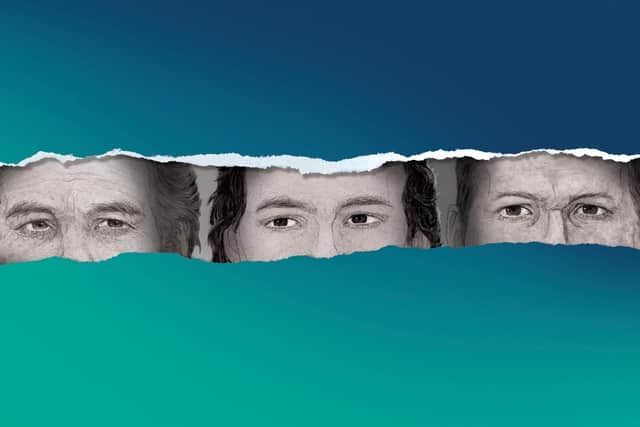This new exhibition in Portsmouth will answer vital questions about the crew of the Mary Rose


The Many Faces of Tudor England will run from Monday, March 18 to Tuesday, December 31, 2019 at The Mary Rose Museum in Portsmouth Historic Dockyard.
It is linked with the Channel 4 documentary Skeletons of the Mary Rose: The New Evidence, part of the series Secret Histories, which will air at 8pm on Sunday.
Advertisement
Hide AdAdvertisement
Hide AdThrough interactive screens, documentary footage, print material and a reproduction of a crew member nicknamed Henry, the exhibition will explore the ship’s company’s genetic heritage, what they looked like and where they were born.


Until now theories on these aspects have been based on where crew members were found by maritime archeologists and what possessions surrounded them at the time.
Records preserve only a few names of those who worked on the Mary Rose during her 34 years of service – before she sank on July 19, 1545 in the Battle of the Solent – and the identities of many will forever remain unknown.
But thanks to studies, groundbreaking new insights will be gained on crew members when the exhibition goes live on Monday.
Advertisement
Hide AdAdvertisement
Hide AdDr Alexzandra Hildred, head of research and curator of ordnance and human remains at the Mary Rose, said: ‘The Many Faces of Tudor England delves not just into the crew’s physical appearance and roles on board the Mary Rose but deeper into their lives.
‘Based on new scientific evidence derived from isotope analysis as well as DNA testing of teeth and bones, the exhibition
takes you on a journey of discovery, exploring the backgrounds of a number of the crew.
‘It also considers what the finds from the Mary Rose can tell us about diversity and globalisation in Tudor England, 500 years ago.’
Advertisement
Hide AdAdvertisement
Hide AdHenry is one of the most complete of the 92 reconstructed crew skeletons of the Mary Rose and bosses say his bones and teeth tell the story of his life.
He was aged between 14 and 18, his left shoulder blade had deep depressions where the ligaments attached and he had well-developed muscles. His spine also showed signs of osteoarthritis and degenerative disease.
His DNA suggested he came from North Africa – making him similar to current-day Moroccans, Mozabite Berbers of Algeria or individuals from the Near East.
The research that led to these findings – and others set to go on display at the exhibition – was carried out by experts at Swansea University, Cardiff University and the University of Portsmouth.
Advertisement
Hide AdAdvertisement
Hide AdDr Sam Robson, senior research fellow and lead bioinformatician on the project, at the University of Portsmouth, said: [This] has been an incredibly interesting story to be a part of and we have learned a huge amount along the way.
‘Being able to take a snapshot of the past and uncover previously unknown information about these characters from centuries ago has been very insightful.’
Another surprising discovery is that of the so-called ‘archer royal’, who was found trapped beneath the rear axle of a bronze cannon on the main deck.
Oxygen isotope analysis on his teeth provided a value much higher than the British norm – one of the highest ever to be
Advertisement
Hide AdAdvertisement
Hide Adrecorded in Britain – suggesting he was not born in Britain.
It is now believed he may have come from inland North Africa, over 50km from the coast.
Steven Perring, story producer at Avanti Media, the production company behind Skeletons of the Mary Rose: The New Evidence documentary, said: ‘These discoveries have the potential to reverse long-held assumptions about diversity in Tudor England.
‘Once again, the Mary Rose is rewriting what we know about the 16th century world.’
Tickets for the Mary Rose can be purchased at maryrose.org or from The Mary Rose Visitor Centre or museum reception.